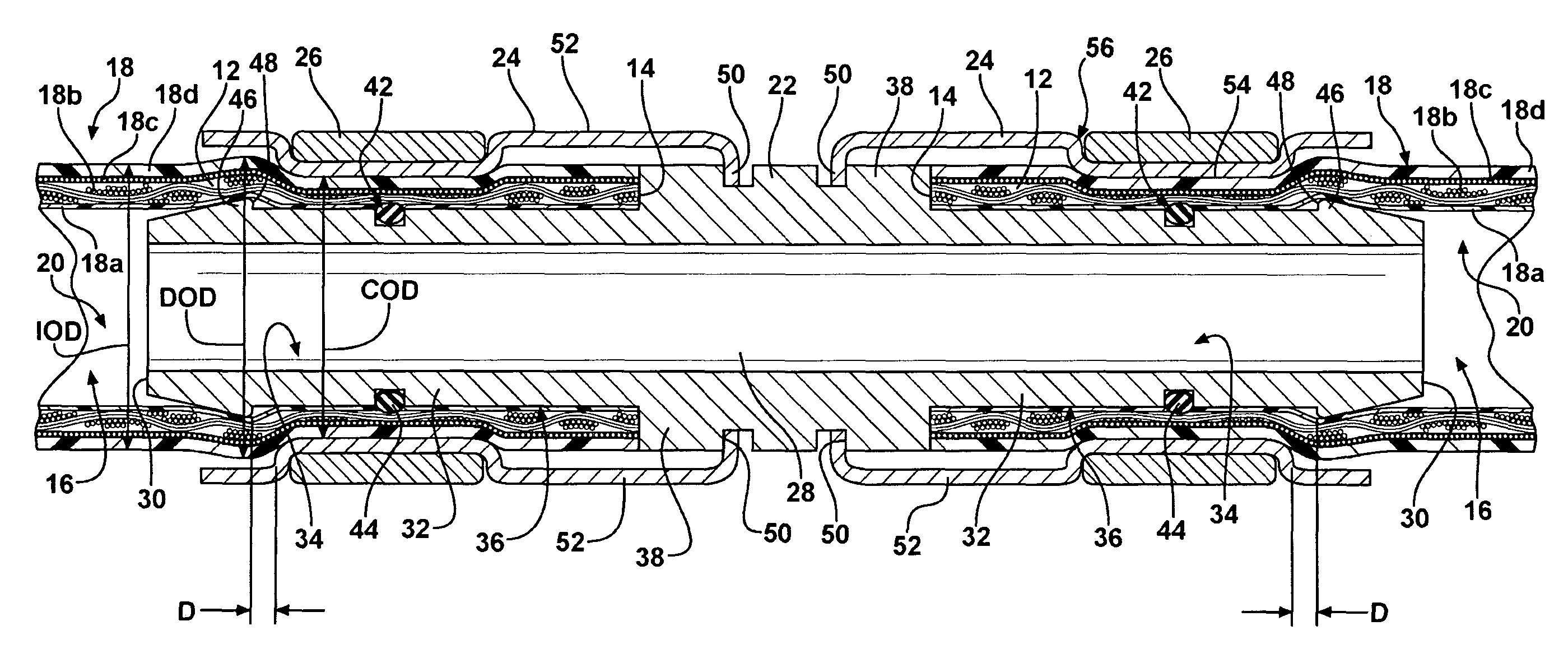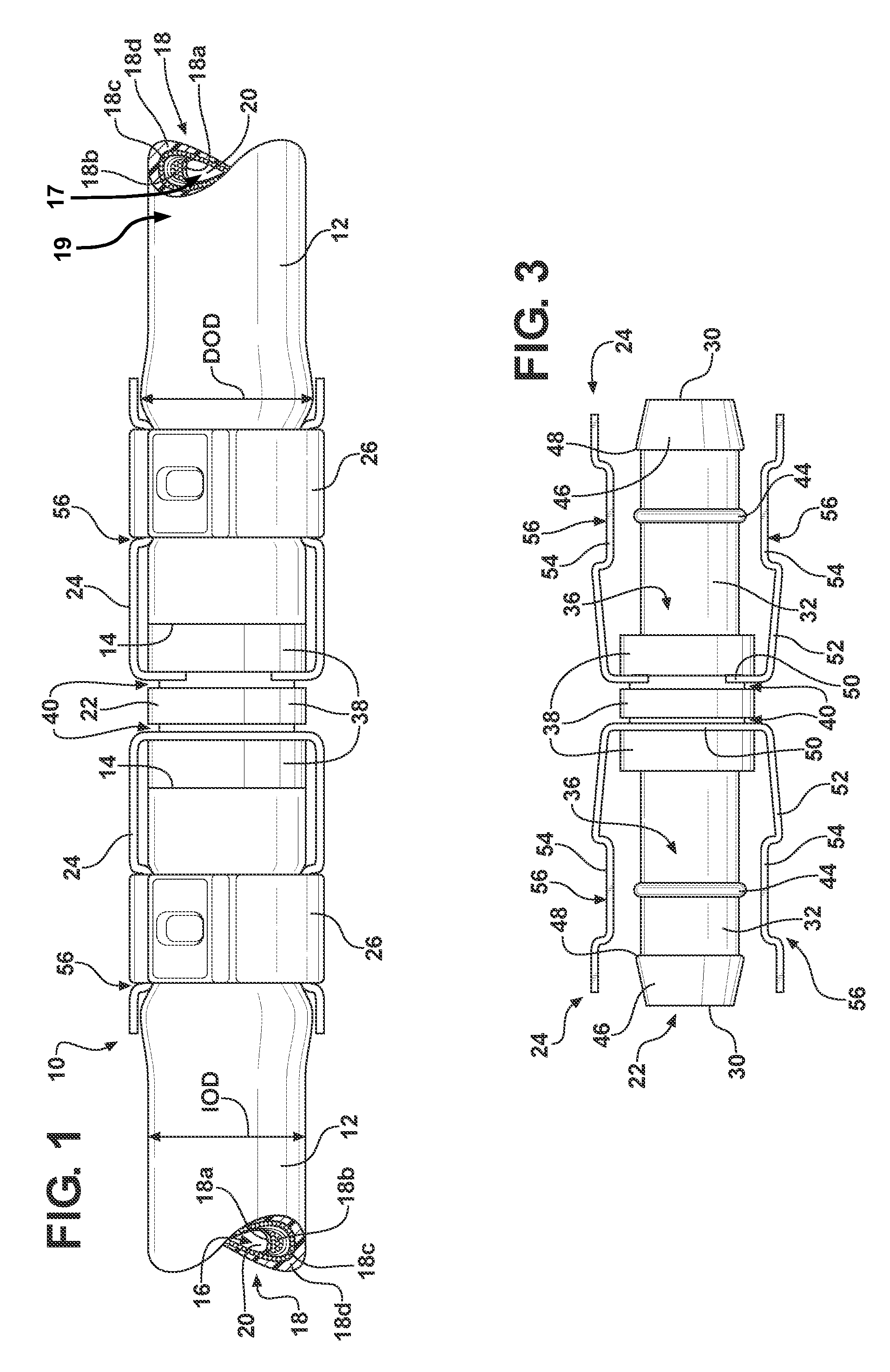Coupling assembly for connection to a hose
a technology of coupling assembly and hose, which is applied in the direction of hose connection, coupling, manufacturing tools, etc., can solve the problems that the specialized materials that are currently meeting the organoleptic and barrier requirements of beverage hoses do not necessarily work well with the barbs, and premature hose failur
- Summary
- Abstract
- Description
- Claims
- Application Information
AI Technical Summary
Benefits of technology
Problems solved by technology
Method used
Image
Examples
Embodiment Construction
[0022]Referring to the drawings, wherein like reference numbers refer to like components, FIG. 1 shows a coupling assembly 10 interconnecting a pair of hoses 12. The coupling assembly 10 may be used to couple hoses 12 for the conveyance of fluids within a fluid system (not shown). For example, the fluid system may be a beverage system. It should be appreciated, however, that the coupling assembly 10 is not limited to being used in a beverage system, as the coupling assembly 10 may be used in other fluid conveyance systems known to those skilled in the art. The coupling assembly 10 is configured to interconnect the pair of hoses 12 such that the coupling assembly 10 withstands at least two times a working pressure of the fluid system without leakage.
[0023]The hoses 12 each extend to a terminus 14 and define a hollow interior 16 extending therethrough, as shown in FIG. 2. The hoses 12 may be formed from a material approved for use in the beverage industry and the like. Each hose 12 in...
PUM
| Property | Measurement | Unit |
|---|---|---|
| distance | aaaaa | aaaaa |
| outer diameter | aaaaa | aaaaa |
| thermoplastic | aaaaa | aaaaa |
Abstract
Description
Claims
Application Information
 Login to View More
Login to View More - R&D
- Intellectual Property
- Life Sciences
- Materials
- Tech Scout
- Unparalleled Data Quality
- Higher Quality Content
- 60% Fewer Hallucinations
Browse by: Latest US Patents, China's latest patents, Technical Efficacy Thesaurus, Application Domain, Technology Topic, Popular Technical Reports.
© 2025 PatSnap. All rights reserved.Legal|Privacy policy|Modern Slavery Act Transparency Statement|Sitemap|About US| Contact US: help@patsnap.com



